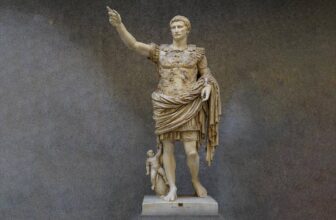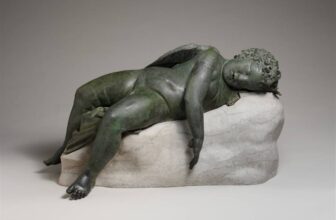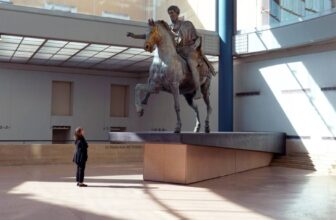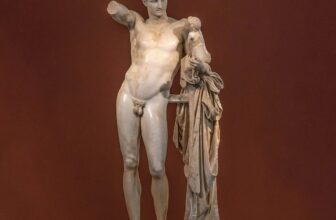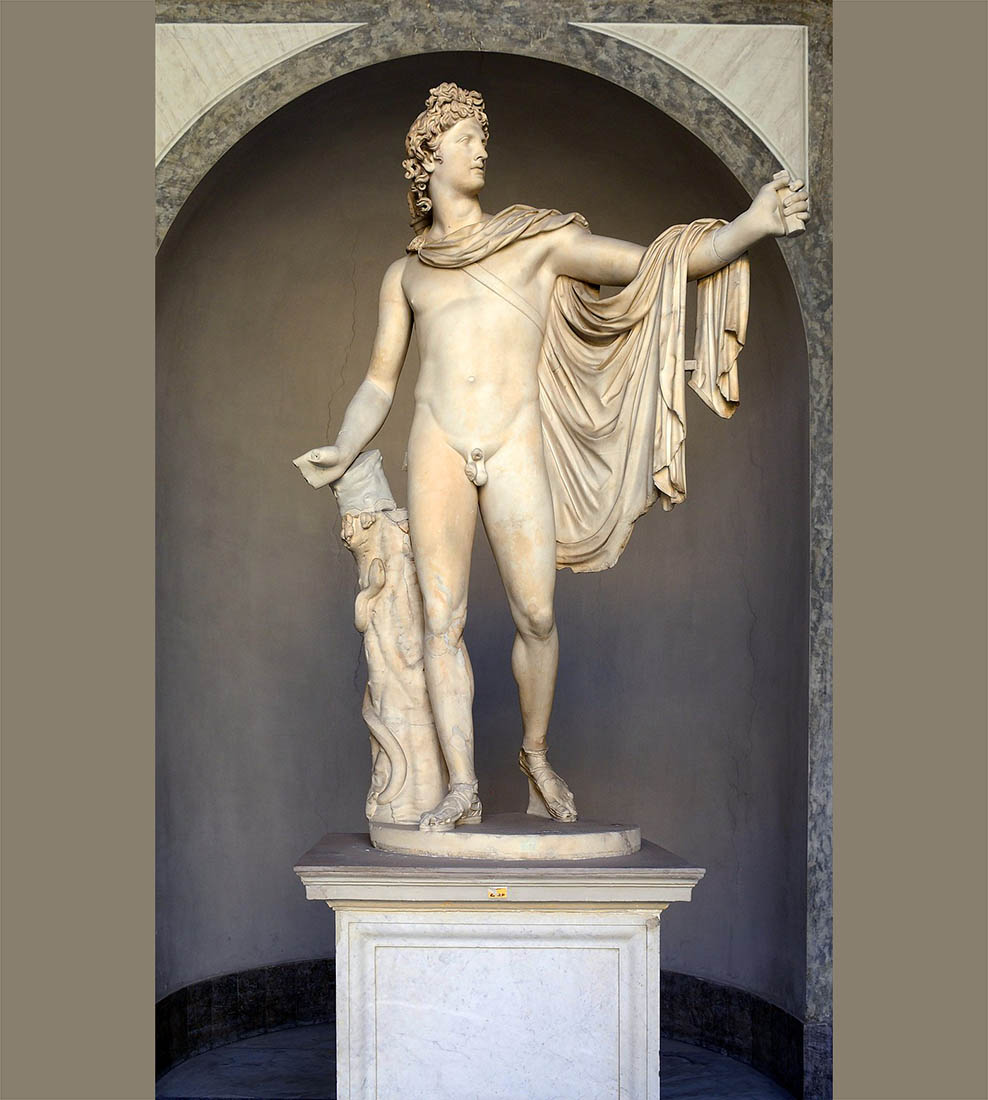
What Does the Apollo Belvedere Represent
Among the countless masterpieces that have graced the annals of art history, few sculptures have captivated the Western imagination as powerfully as the Apollo Belvedere. Revered for centuries as the epitome of classical beauty and harmony, the sculpture is more than just a representation of the Greek god Apollo; it is a powerful symbol of idealism, intellect, and divine order. The Apollo Belvedere stands at the confluence of mythology, art, spirituality, and human aspiration, embodying both the heritage of antiquity and the philosophical ideals of the Renaissance and Enlightenment.
In this post, we explore the origins, symbolism, spiritual resonance, and current location of the Apollo Belvedere, tracing how this marble figure came to represent more than just a deity, it became an icon of civilization itself.
Who Sculpted the Apollo Belvedere?
The Apollo Belvedere is a Roman marble copy of a lost Greek bronze original, most likely created in the 4th century BCE. While the precise identity of the original Greek sculptor is still debated, many scholars have historically attributed the lost bronze prototype to Leochares, a Greek sculptor active during the late Classical period (c. 350 BCE). Leochares is known for his work on the Mausoleum at Halicarnassus, one of the Seven Wonders of the Ancient World.
The Roman marble version we see today was probably sculpted in the late 2nd century CE, during the Roman Imperial era. Roman artists often recreated celebrated Greek sculptures in marble, which was more accessible and widely used for public monuments. Though a copy, the Apollo Belvedere retains the grace, rhythm, and idealized form that characterized the Greek original, a testament to the enduring appeal of Classical art.
The statue was rediscovered during the Italian Renaissance, likely in the late 15th century, in central Italy. It quickly found its way to the Vatican’s Cortile del Belvedere, a garden courtyard that became a sanctuary for ancient art. This location gave the statue its modern name: Apollo Belvedere.
What Does the Apollo Belvedere Represent?
At first glance, the Apollo Belvedere appears simply as a youthful, nearly nude male figure, adorned with a flowing chlamys (a Greek cloak), which is fastened at his neck and falls dramatically over his left shoulder. His left arm is outstretched, his right hand once held a bow (now lost), and his head is turned gracefully to the left. His expression is serene, slightly detached, and imbued with an ethereal authority.
This is Apollo, the Greek god of light, music, poetry, prophecy, healing, and the sun. But in this sculpture, Apollo is not shown in the act of playing the lyre or delivering oracles; he is depicted as the epitome of divine elegance and restraint, a victorious, idealized figure standing in the aftermath of a heroic feat, possibly after slaying the Python, the serpent of darkness and chaos in Greek mythology.
His pose, known as contrapposto, where the weight is shifted onto one leg, creates a dynamic balance between motion and rest. This posture, refined by Classical Greek sculptors, embodies harmony in tension, strength in repose, a physical metaphor for self-mastery, a central ideal in Greek philosophy.
Symbolism of the Apollo Belvedere Sculpture
Over centuries, the Apollo Belvedere has taken on layers of symbolism far beyond its mythological roots. These layers touch on aesthetic ideals, cultural philosophy, and metaphysical beliefs.
1. The Ideal Human Form
The Apollo Belvedere became a touchstone for idealized human anatomy. During the Renaissance and Enlightenment periods, the statue was often considered the most perfect representation of the male form. Johann Joachim Winckelmann, an 18th-century German art historian widely regarded as the father of art history, famously wrote in 1764:
“In gazing at this miracle of art, I forget everything else in the world…”
Winckelmann’s writing helped elevate the Apollo Belvedere as a symbol of Neoclassical perfection, influencing generations of artists, sculptors, and intellectuals who sought to emulate its balance, proportion, and expressive restraint.
2. Divine Rationality and Order
Apollo was often associated with logic, reason, and order, qualities that were highly prized in Classical and later Enlightenment thought. In this sculpture, he embodies the rational clarity of the cosmos. His upright stance, composed gaze, and poised limbs suggest an alignment with the divine order of the universe, a stark contrast to the wild, emotional depictions of other gods like Dionysus.
3. Victory Over Darkness
Some interpretations suggest the Apollo Belvedere represents Apollo after slaying the Python, a serpent that personified darkness, chaos, and death. This interpretation imbues the statue with symbolic weight: Apollo is the bringer of light, a vanquisher of chaos. His upward gaze and calm demeanor are those of a deity who has triumphed over base instincts and restored harmony.
4. The Artistic Ideal of Balance
The statue’s blend of movement and stillness, power and grace, divine and human qualities, suggests a balance between dualities. The Apollo Belvedere is not just about physical beauty, it represents the synthesis of body and soul, passion and reason, nature and culture. It is an allegory of human potential in its most refined form.
Spiritual Meaning of the Apollo Belvedere
Beyond artistic admiration and philosophical reflection, the Apollo Belvedere also carries spiritual significance, especially within the context of ancient Greek religious thought and later Neoplatonic interpretations.
1. Apollo as a Symbol of the Higher Self
In many spiritual traditions, the journey of the soul involves a return to divine perfection, a shedding of ignorance, and an alignment with higher truths. Apollo, in this context, represents the “higher self”, the illuminated aspect of the soul that seeks wisdom, harmony, and transcendence.
The Apollo Belvedere, in his poised, almost otherworldly grace, is not just a figure of myth but an archetype of spiritual awakening. His upward gaze and calm expression speak of inner clarity and divine insight. He stands as a reminder that enlightenment comes through discipline, self-knowledge, and harmony with the divine.
2. Light as Spiritual Illumination
As the god of the sun and light, Apollo is inherently linked with illumination, not just physical, but spiritual. In many esoteric traditions, light symbolizes divine truth, clarity, and awareness. The Apollo Belvedere’s calm dignity reflects the light of understanding, the shedding of ignorance and illusion.
3. The Balance Between Physical and Divine Beauty
From a spiritual perspective, the statue’s beauty is not merely sensual but symbolic of divine beauty. According to Platonic and Neoplatonic thought, beauty in the physical world is a reflection of divine order. To contemplate beauty, as embodied in the Apollo Belvedere, was to align the soul with higher realities.
In this view, the Apollo Belvedere is a spiritual bridge, a visible form that points toward the invisible, eternal truths.
Cultural Legacy and Historical Journey
The Apollo Belvedere’s cultural influence has been profound. After its rediscovery during the Renaissance, it became a centerpiece of the Vatican’s collection. It was studied, copied, and emulated by some of the greatest artists of the 15th to 19th centuries. From Michelangelo to Canova, the statue influenced the trajectory of Western sculpture and artistic standards.
During the Napoleonic wars, the statue was taken to France and displayed in the Louvre, where it continued to inspire awe. After Napoleon’s defeat, it was returned to the Vatican in 1815.
Throughout the 18th and 19th centuries, it was frequently cited as the “most beautiful sculpture in the world.” Though tastes have shifted in the modern era, and more dynamic or emotionally expressive works (such as those by Michelangelo or Bernini) have gained favor, the Apollo Belvedere remains a benchmark for idealized form and Classical restraint.
Where is the Apollo Belvedere Now?
Today, the Apollo Belvedere resides in the Vatican Museums, specifically in the Octagonal Court (Cortile Ottagono) of the Museo Pio-Clementino. This part of the Vatican was originally the Cortile del Belvedere, the very courtyard that gave the sculpture its name.
It continues to draw thousands of visitors each year, who come not only to admire its physical perfection but to experience the aura of calm, grace, and divine elegance that it radiates.
The Vatican Museums provide a fitting home for the Apollo Belvedere, not only because of the sculpture’s Catholic custodianship but because of its symbolic power as a unifying force between antiquity and Christianity, humanism and spirituality, art and theology.
Apollo Belvedere as Eternal Archetype
The Apollo Belvedere is not merely an ancient sculpture. It is an eternal archetype, of beauty, divinity, harmony, and higher truth. From the hands of unknown Roman craftsmen replicating a lost Greek masterpiece, to its Renaissance rediscovery and Enlightenment veneration, Apollo’s journey has paralleled humanity’s own quest for order, meaning, and transcendence.
The sculpture stands as a monument to the human spirit, its potential for refinement, its hunger for knowledge, and its capacity to manifest divinity in form. In an age often dominated by fragmentation, immediacy, and disorder, the Apollo Belvedere remains a still point, inviting us to pause, reflect, and remember the timeless ideals that once shaped civilizations.
It reminds us that art is not just decoration, it is revelation.
And in Apollo’s gaze, we might still find our own reflection: not as we are, but as we could be.
